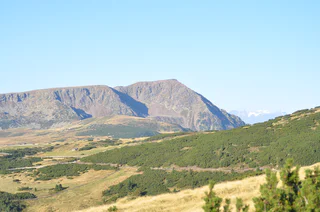
Ski tour to the Kleiner Angelus peak
Solda/Sulden, Stilfs/Stelvio, Vinschgau/Val Venosta
Nedotčená krajina, klid stranou sjezdovek a svahy pokryté hlubokou vrstvou prašanu a firnu. Chcete se raději řítit přímo dolů po dolomitských svazích? Dáváte přednost povlovnějším vrcholům? Máte rádi výhledy do dáli? Nebo se snad spokojíte jen s těmi nejvyššími vrcholy? Ať už preferujete cokoliv, jedno je jisté: Pokud se vydáte na skialpinistickou výpravu v Jižním Tyrolsku, užijete si jedinečné přírodní zážitky spojené se sportovními dobrodružstvími.

Solda/Sulden, Stilfs/Stelvio, Vinschgau/Val Venosta

1/2
S.Martino/Reinswald, Sarntal/Sarentino, Brixen/Bressanone and environs

1/3
Colfosco/Colfosco, Corvara, Dolomites Region Alta Badia

1/3
Badia/Badia, Badia, Dolomites Region Alta Badia

1/3
Maso Corto/Kurzras, Schnals/Senales, Vinschgau/Val Venosta

San Nicolò/St. Nikolaus, Ulten/Ultimo, Meran/Merano and environs

1/3
Certosa/Karthaus, Schnals/Senales, Vinschgau/Val Venosta

1/2
Valles/Vals, Mühlbach/Rio di Pusteria, Brixen/Bressanone and environs

Casere/Kasern, Sand in Taufers/Campo Tures, Ahrntal/Valle Aurina

Gandelle-Franadega-Fienili/Kandellen-Frondeigen-Stadlern, Toblach/Dobbiaco, Dolomites Region 3 Zinnen

1/2
S. Giacomo/St. Jakob - Val di Vizze/Pfitsch, Pfitsch/Val di Vizze, Sterzing/Vipiteno and environs

Stulles/Stuls, Moos in Passeier/Moso in Passiria, Meran/Merano and environs

1/4
San Leonardo i.P./St. Leonhard i.P., St.Leonhard in Passeier/San Leonardo in Passiria, Meran/Merano and environs

Sesto/Sexten, Sexten/Sesto, Dolomites Region 3 Zinnen

Stelvio/Stilfs, Stilfs/Stelvio, Vinschgau/Val Venosta

1/3
Maso Corto/Kurzras, Schnals/Senales, Vinschgau/Val Venosta

Sulden/Solda, Stilfs/Stelvio, Vinschgau/Val Venosta

Ridanna/Ridnaun, Ratschings/Racines, Meran/Merano and environs

San Leonardo i.P./St. Leonhard i.P., St.Leonhard in Passeier/San Leonardo in Passiria, Meran/Merano and environs

1/4
Plan/Pfelders, Moos in Passeier/Moso in Passiria, Meran/Merano and environs

Solda/Sulden, Stilfs/Stelvio, Vinschgau/Val Venosta

Stulles/Stuls, Moos in Passeier/Moso in Passiria, Meran/Merano and environs

San Vigilio, Al Plan/San Vigilio, Dolomites Region Kronplatz/Plan de Corones

1/3
Madonna/Unser Frau, Schnals/Senales, Vinschgau/Val Venosta

Resia/Reschen, Graun im Vinschgau/Curon Venosta, Vinschgau/Val Venosta

Fleres/Pflersch, Brenner/Brennero, Sterzing/Vipiteno and environs

Braies di Fuori/Ausserprags, Prags/Braies, Dolomites Region 3 Zinnen

Ridanna/Ridnaun, Ratschings/Racines, Meran/Merano and environs

1/9
Terento/Terenten, Terenten/Terento, Brixen/Bressanone and environs

1/4
Maso Corto/Kurzras, Schnals/Senales, Vinschgau/Val Venosta